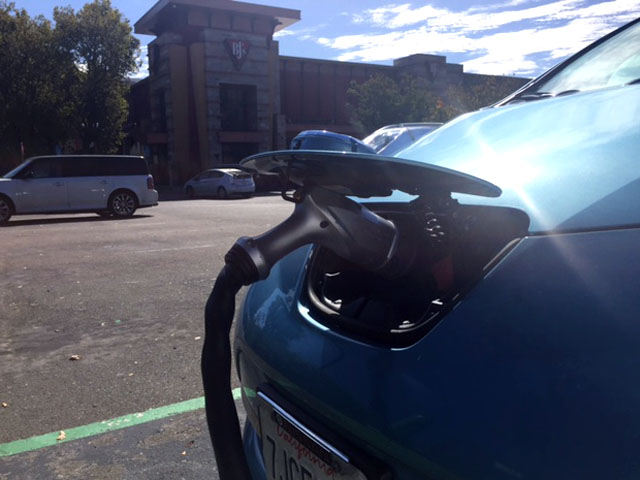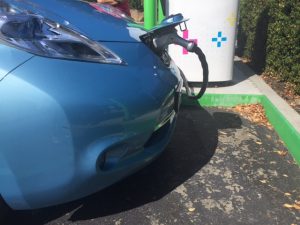
Thanks to ongoing technological innovation, the electric vehicle has become a viable alternative to conventional means of transportation. Photo: American Ratings Corporation (2016)
Electric vehicles (EVs) have come a long way during the past decade, thanks to automakers like Tesla and Nissan making continual advancements in efficiency and capability. Unlike hybrid vehicles like the Toyota Prius, which revert to a gasoline engine after the electric battery is depleted, EVs don’t rely on fossil fuels at all, which is why innovation has been so crucial in making them viable for commuter use. As range capabilities rise in excess of 100 miles per charge and public recharging stations continue to sprout up across the metropolitan landscape, there’s no doubting that EVs are more practical today than ever before. What’s more, they offer the following advantages:
Zero emissions
An electric vehicle represents the ultimate eco-friendly means of automotive transportation, allowing you to get where you need to go without contributing to ozone depletion. Plus, no emissions means no more smog checks!
Zero gas
If you’ve driven a gas-powered vehicle for most of your life, you’re familiar with the “pain at the pump” that sets in when fuel prices spike. By doing away with reliance on fossil fuels, an EV lets you avoid this altogether. While charging an electric car isn’t free, it’s substantially cheaper than the price of gasoline and will likely continue to be.

Owning an electric car means no more pain at the pump! Photo: American Ratings Corporation (2016)
Less maintenance
Since EVs don’t have fuel combustion engines, you can say goodbye to oil changes and other associated maintenance steps. In most cases, the only maintenance that needs to be done prior to your first major service interval is a tire rotation.
HOV lane privileges
In California, EVs are eligible for single occupant access to HOV (carpool) lanes. To take advantage of this, drivers must first obtain a Clean Air Vehicle (CAV) sticker from the DMV.
Parking perks
For the most part, EVs tend to be fairly compact, which makes parking less of a challenge in congested urban areas like San Francisco. Furthermore, driving an electric car can save you money on parking. In Sacramento, EVs are eligible for free parking and recharging in designated spaces, while in San Jose, they can park for free at downtown garages, on-street metered spaces and regional parks. Keep in mind that owners must first register their vehicles with the city.
Financial incentives
Over the last five years, government programs like the Clean Vehicle Rebate Project (CVRP) have provided financial incentives for California drivers to purchase hybrid and electric vehicles. Also, individuals who purchase clean power vehicles are currently eligible for a federal tax credit of up to $7,500 (depending on the size of the vehicle’s battery pack).
Here’s the catch: At the moment, most of these incentives are either on hold or nearing expiration. Currently, CVRP funding has been exhausted, so rebate seekers are being put on a waiting list while the state legislature decides whether to extend funding for the program. Meanwhile, the federal income tax credit is set to phase out gradually in conjunction with the number of EVs sold. While this number has yet to be reached, it’s not far off, so if you want that tax credit, there’s no time like the present to make your electric vehicle purchase.
To find an EV dealer in your area, visit www.diamondcertified.info.
Learn more about owning an electric vehicle.
